
Field Hockey Positions – A Comprehensive Guide!
As a passionate enthusiast, field hockey positions are the strategic backbone, creating a dynamic interplay pivotal to the game’s excitement and success.
Field hockey positions define distinct roles: goalkeepers, defenders, midfielders, and forwards, each crucial to the team’s strategy, intensifying the sport’s intricacy and excitement.
This article will comprehensively explore the diverse roles and responsibilities of field hockey positions. We’ll delve into the nuances of each part, uncovering the tactics and techniques vital for a deeper understanding of this dynamic sport.
Table of Contents:
What Are Field Hockey Positions – (For Those Who Don’t Know)
Field hockey positions refer to designated roles assigned to players during a match. These positions are essential components that structure the team’s gameplay and strategy.
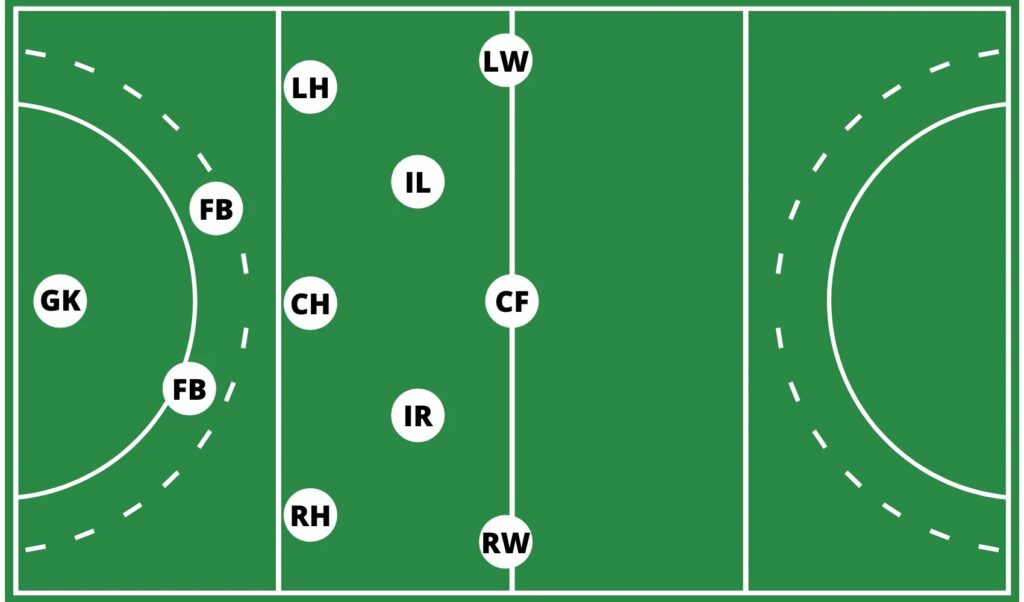
The positions include goalkeepers, defenders, midfielders, and forwards, each having distinct responsibilities and functions on the field. The goalkeeper, positioned to defend the goal, is the last line of defence, employing agility and reflexes to block shots and initiate counter-attacks.
Defenders work to thwart opponents by intercepting passes, making tackles, and ensuring the defensive line remains sturdy. Midfielders link defence and offence, controlling the game’s pace, distributing the ball, and supporting both defensive and attacking plays.
Forwards, known for their speed and scoring prowess, focus on creating goal-scoring opportunities by manoeuvring past defenders and taking shots on goal. These positions create a structured framework within which players operate, contributing uniquely to the team’s overall strategy and success.
Read Also: ALICE ZENOBIA RICHMOND – A PEEK INTO THE LIFE OF A RISING STAR!
Basic Field Hockey Positions – Let’s Explore!
1. Goalkeeper:
The goalkeeper, stationed within the striking circle, plays a pivotal role in defence. Their primary objective is to prevent the opposing team from scoring by using exceptional reflexes and decision-making skills.
2. Defenders:
Defenders form a robust line of defence, working with the goalkeeper to thwart the opponent’s advances. Their duties encompass intercepting passes, tackling opponents, and initiating counter-attacks.
3. Midfielders:
The midfielders act as the link between defence and offence. They possess a versatile skill set, contributing to defensive manoeuvres and offensive plays, thereby maintaining possession and dictating the game’s tempo.
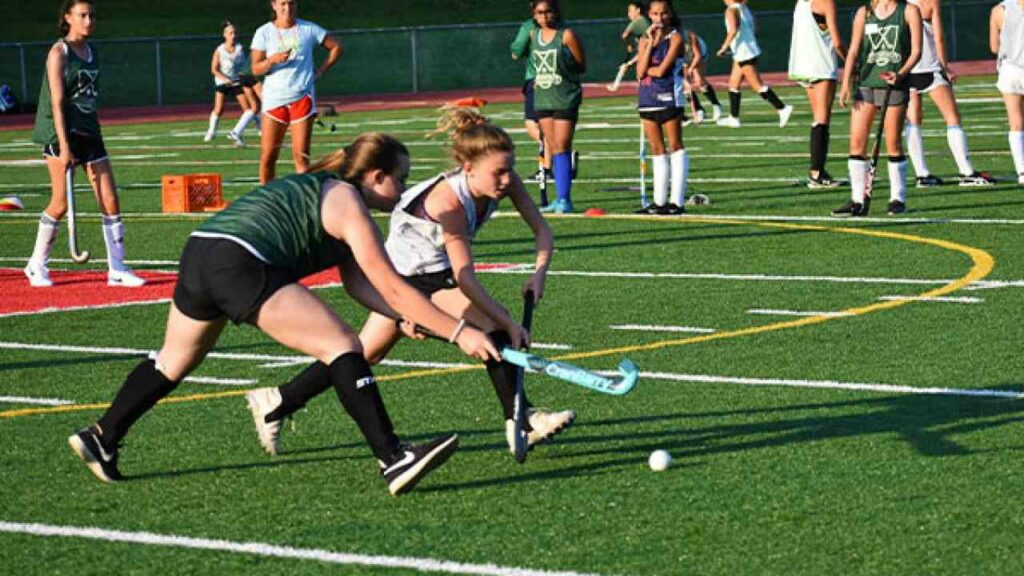
4. Forwards:
Forwards are the offensive powerhouse responsible for creating goal-scoring opportunities. Their agility, speed, and scoring prowess make them instrumental in putting pressure on the opposing team’s defence.
Role And Responsibilities Of Each Position – Dive In It!
1. Goalkeeper’s Role
Goalkeepers need exceptional reflexes, agility, and spatial awareness. Their primary responsibility is to protect the goal by making crucial saves and initiating counter-attacks with accurate distribution.
2. Defenders’ Responsibilities
Defenders act as the first line of defence, intercepting passes, making tackles, and supporting the goalkeeper. Their strategic positioning and ability to read the game are vital in thwarting opposition attacks.
3. Midfielders’ Duties
Midfielders control the game’s tempo by transitioning from defence to offence. Their responsibilities include maintaining possession, distributing the ball effectively, and supporting defensive and offensive plays.
4. Forwards’ Tasks
Forwards focus on scoring goals by capitalizing on opportunities. Their agility, speed, and ability to create goal-scoring chances are crucial in putting pressure on the opponent’s defence.
Tactics And Strategies For Field Hockey Positions – Discover It!
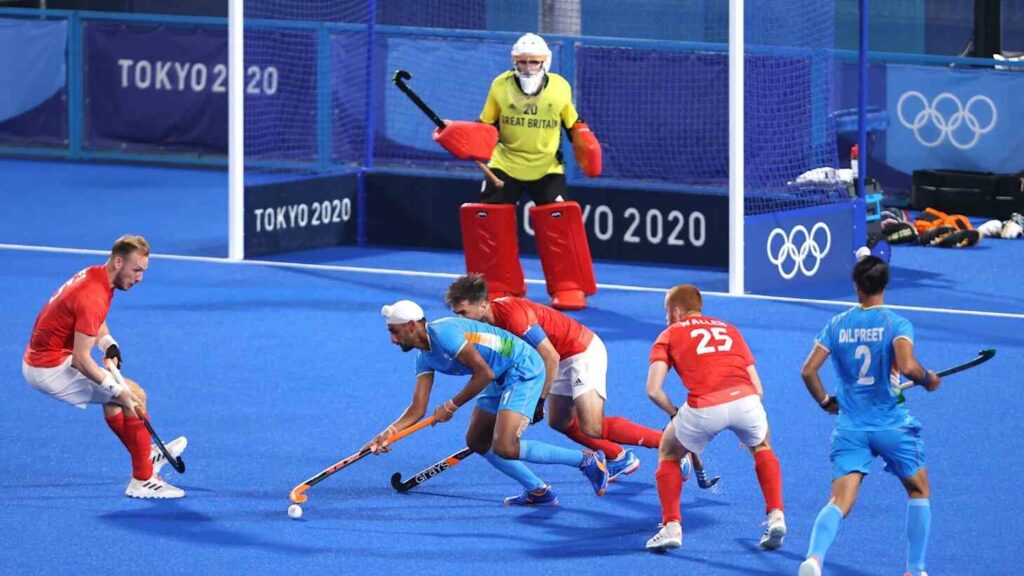
1. Position-specific Tactics
Each position requires specific tactics tailored to their roles. For instance, defenders focus on marking opponents tightly, while forwards employ clever positioning to receive passes and create scoring opportunities.
2. Interplay between Positions
Effective communication and understanding between positions are essential. Defenders passing to midfielders, who then create opportunities for forwards, showcases the synergy between positions.
3. Team Dynamics and Communication
A cohesive team communicates effectively on the field, ensuring seamless transitions between positions and executing strategies precisely.
Read Also: WHAT DOES GT MEAN? – LET’S EXPLORE IN 2023!
Adapting Field Hockey Positions – You Must Know!
1. Versatility in Positions
Players may adapt to different positions based on their skill sets, allowing for flexibility within the team and adapting to varying game situations.
2. Flexibility for Players
Players can evolve and enhance their skills across multiple positions, contributing significantly to team strategies and dynamics.
3. Adopting Different Field Hockey Positions
Field hockey teams often adapt their strategies by repositioning players based on the game’s dynamics. This adaptability showcases the versatility and flexibility of players to suit the team’s needs.
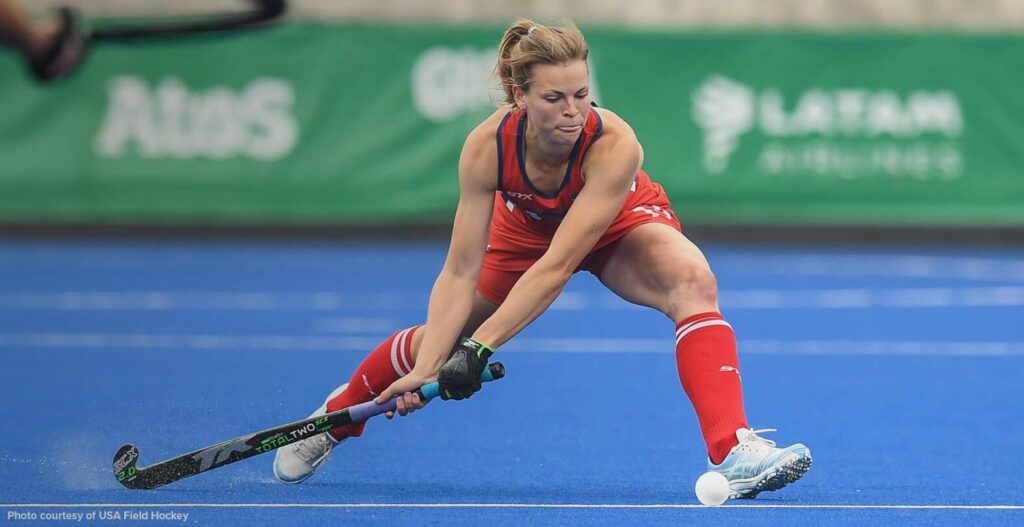
4. Understanding Versatile Positions
Certain players possess skills that allow them to transition between different positions seamlessly. This adaptability benefits the team by providing options during critical moments in the game.
5. Strategic Flexibility
Teams benefit from having players who can occupy multiple positions. This flexibility allows for swift changes in tactics, adapting to opponents, and exploiting their weaknesses.
6. Situational Awareness
Players with experience in various positions enhance the team’s situational awareness. Understanding multiple roles fosters better decision-making in the field.
Mastering Field Hockey Techniques For Each Position – All You Need!
1. Goalkeeping Techniques
Goalkeepers must master techniques like diving saves, stick saves, and clearances to ensure adequate defence. Their ability to read opponents’ moves is crucial for successful goalkeeping.
2. Defensive Strategies
Defenders hone skills such as intercepting passes, making tackles, and positioning to nullify the opponents’ attacking threats. Effective marking and anticipation play a pivotal role in defensive strategies.
3. Midfield Mastery
Midfielders focus on ball control, passing accuracy, and quick decision-making. Mastering these skills allows them to dictate the game’s flow and transition seamlessly between defence and offence.
4. Forward Fundamentals
Forwards perfect techniques like goal scoring, ball control, and creating scoring opportunities. Their agility and ability to outmanoeuvre defenders are vital to breaking through the opposition’s defence.
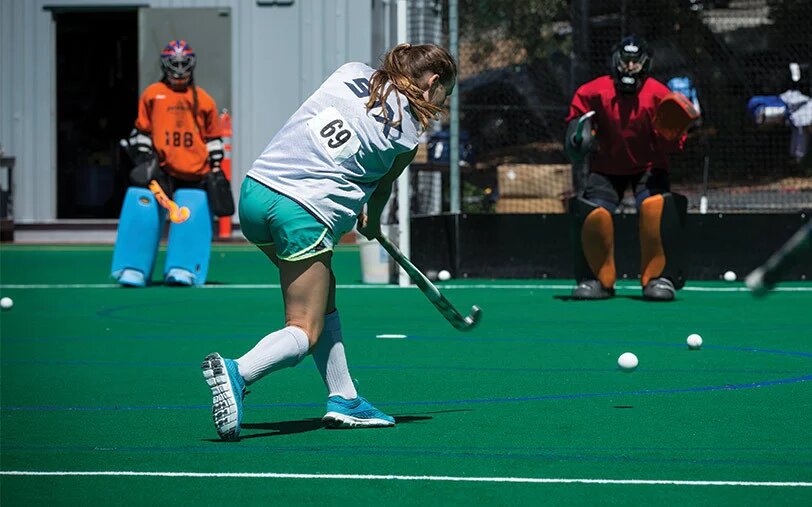
Advancing Field Hockey Tactics – Uncover The Truth!
1. Positional Shifts in Gameplay
During a match, teams may shift positions dynamically to surprise opponents or counter their strategies. Such tactical shifts often alter the game’s momentum.
2. Strategic Substitutions
Coaches make strategic substitutions to inject fresh energy or tactical changes into the game. This manoeuvre maximises the team’s strengths while exploiting the opponent’s weaknesses.
3. Analyzing Opponents’ Positions
Studying the opponents’ positions helps teams develop counter-strategies. Recognizing their strengths and weaknesses allows for better planning and execution during the game.
Read Also: WENDY ETRIS – IS A PIONEER IN THE RELEVANT FIELD!
Conclusion:
In short,
Field hockey positions are the cornerstone of team strategy, each uniquely influencing overall success, emphasizing the sport’s dynamic nature and collective synergy.
Mastering these roles is essential for cohesive play and competitive performance in field hockey.
FAQs
1. Can players switch positions during a field hockey match?
Players can seamlessly switch positions during a match, offering tactical versatility and accommodating varied gameplay strategies as the game unfolds.
2. What are the primary skills required for a midfielder in field hockey?
Midfielders rely on robust stamina, adept precision in passing, and a deep understanding of the intricate interplay between offence and defence, pivotal for commanding the midfield and dictating the game’s tempo.
3. Are field hockey forwards solely focused on scoring goals?
While scoring goals is their primary objective, forwards also play a pivotal role in creating scoring opportunities and pressuring the opposition’s defence.
4. What distinguishes an exceptional goalkeeper in field hockey?
Exceptional goalkeepers stand out due to their agility, decision-making skills, and effective communication on the field.
5. How crucial is teamwork in the context of field hockey?
Teamwork is paramount; effective communication and coordination between positions lead to a cohesive and successful team dynamic.
You May Also Like
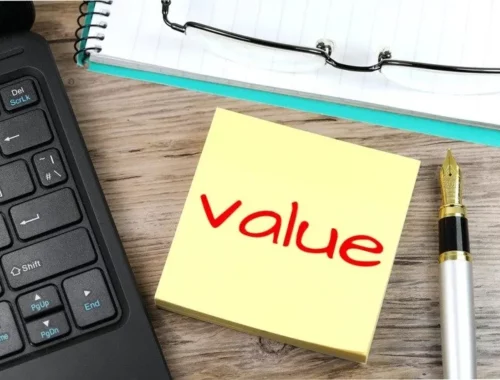
How can I increase the value of my property?
April 8, 2024
tamiljio rockers.com
March 27, 2024

